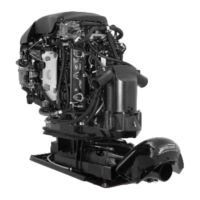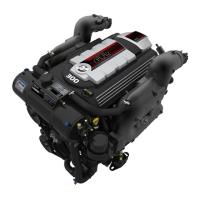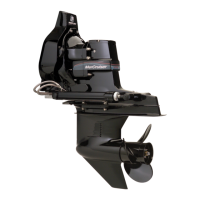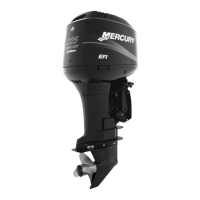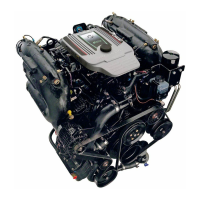STARTING SYSTEM SERVICE MANUAL NUMBER 22
Page 4A-6 90-860074--1 FEBRUARY 2002
Inspection
Periodic Inspection
Starter motor with solenoid is completely enclosed when mounted to the drive housing to
prevent entrance of moisture and dirt. However, periodic inspection is required.
1. Inspect terminals for corrosion and loose connections.
2. Inspect wiring for frayed and worn insulation.
3. Ensure that mounting nuts are tight.
4. Ensure that mounting surfaces under the starter motor and the mounting bolts are free
of paint and corrosion. Treat with lubricant to prevent corrosion.
Testing Voltage
Always test the voltage at the starter motor to ensure a minimum of 9.5 volts during cranking.
IMPORTANT: Voltage below 9.5 causes excessive heat build up, which can damage
the starter motor and weld the starter solenoid contacts together.
1. Ensure that battery is fully charged.
2. Connect voltmeter positive (+) lead to the terminal on the starter solenoid.
3. Connect voltmeter negative (–) lead to the starter motor case. Ensure that there is good
metal contact to prevent a false voltage reading.
4. Crank engine for 10 seconds and record voltmeter reading.
5. A reading of 9.5 volts or more verifies starter motor is getting sufficient voltage.
NOTE: If the starter is getting at least 9.5 volts and the engine is not cranking properly,
remove the glow plugs or hole plugs and try turning the engine over by hand. If the engine
turns over freely by hand, the starter motor could have a problem.
6. A reading below 9.5 volts suggests a voltage loss between the battery and the starter.
Refer to Testing Voltage Drop.
